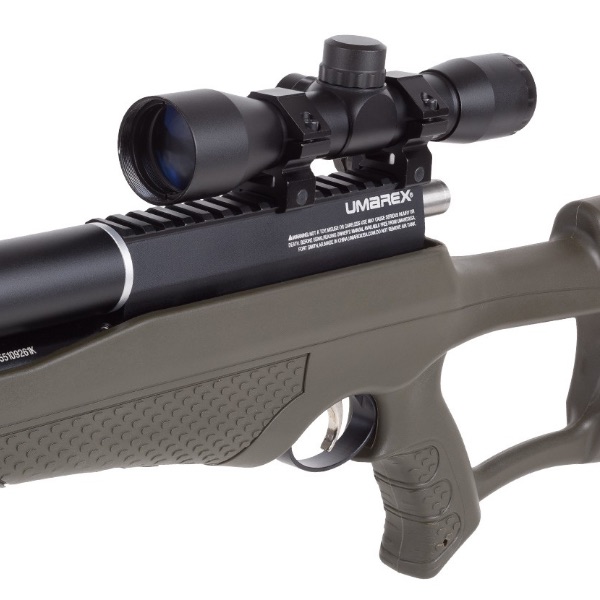Many airguns today come with a bundled scope or optic, so when does it make sense to swap that out for something different or better? What do you need to be looking at when you do? We’re going to explore those topics and more in this post.
Pre-Packaged Bundled Optics
So many airgun buyers ask why manufacturers bundle “less than optimal” scopes with their airguns. Surely it would be better to just let shooters buy what they want and save the cost of the scope, right? Actually, we’ll let you in on a little industry secret. Airgun manufacturers actually don’t have the control that you might think they have. If they want to sell their guns, the retailers, dealers, and distributors tell them what they expect, and the manufacturer builds to their requirements. The retailers are essentially the customer, not you. Rather you are the “end-user.”
Consider this… You are the basic “first-time” airgun buyer or at least a novice airgunner and you see an airgun on the shelf for $189 with a 3-9×40 scope and another with the same caliber and specifications at $185 without a scope. Next to that, you see a basic 3-9×40 airgun scope on the rack for $69.99. What are you going to buy? Not knowing any better, you’ll probably want to save the $65 and go with the bundle right? You are not alone.
Big Box retailers and major distributors know this all too well, and it’s why they insist that in order for them to stock the products they have to come as a bundle. On the other side of the coin, manufacturers, having to earn a living as well, bundle a scope that only just meets the requirements. This is why most of the time, the bundled optic is the first upgrade.
Looking for the Right Upgrade
If you’re in this situation then you’ve probably been looking at features and specs to find the best scope at the lowest price. We want to help you make the best option. The first thing you need to realize is that the fancy terms like: shockproof, waterproof, nitrogen-filled, fog proof, etc., are essentially the industry standard for all rifle scopes. Also, when buying glass for your airgun, you really do get what you pay for.
Here are the important terms that will help you make the right choice at the right price.
Parallax
Let’s start with the most important aspect of an airgun scope, second to glass quality, and that is parallax. It’s often referred to as “focus” which is essentially the result you see while looking through the scope as you adjust the parallax. (Adjustable scopes come in side focus and front focus variations.)
Nearly all bundled scopes, the ones you get in the box with your airgun, are not adjustable for parallax. That means that anything closer than their fixed parallax setting (usually 35 or 50 yards) is probably going to be out of focus. You may have already experienced this with a 3-9 scope where you “zoom” in to 9x at 10 yards and it’s all out of focus.
With an adjustable parallax scope, even an affordable one like the Hawke Vantage IR, you’d be able to adjust the field of view into focus from 10 yards to infinity. So adjustable parallax is a must for an airgun scope.
Reticle
The reticle, i.e. crosshairs of your scope, is the next most critical consideration. There are essentially two types; wire and etched glass. Within those two reticle types, there are dozens of styles. But we’ll talk about two specific styles for the sake of this article; plain or duplex and mil-dot or range estimating.
You’ll find each style within the wire and etched glass family:
- The essential difference is that a wire reticle is just that, a wire that’s strung in the tube of the scope to provide the shooter his or her aim point.
- An etched glass reticle uses an etched piece of glass and is more reliable and durable across a wider selection of airguns.
As expected, etched glass reticle scopes are more expensive than wire reticle scopes. Also, etched glass reticles generally hold up much better on spring or gas ram powered airguns, which have proven very destructive on wire reticle scopes. Does this mean you should ignore all wire reticle scopes? Not at all. They can be reliable and durable on airguns with minimal recoil (PCP, CO2, i.e., not spring-powered airguns) and, they offer great value for that purpose.
Last point on reticles, some etched glass and wire reticle scopes come with an illumination option. This is great when shooting at dusk and you are lining up your crosshairs on a dark target. If that’s important to your type of shooting, then be sure to check that box when you upgrade.
Glass
There’s a reason we call rifle optics “glass.” Because that’s the most critical part of your scope. It’s what gathers and transmits light through the various optical components (i.e. glass) through the front of the scope and out the eyepiece.
All the features in the world when combined with cheap glass won’t be much of an upgrade. Rather, go for the best glass you can afford. Here’s a general rule of thumb when picking a new airgun scope: budget about 50% of the value of your airgun for a new airgun scope.
That rule is not etched in stone, and may not always be practical, but it’s a great way to see if you are on the right track when you want to ditch the bundled scope for a shiny new piece of airgun glass!
Need help? That’s what we are here for. Just get with our folks here at Airgun Depot and we’ll make sure you get the right scope for your airgun the first time!
